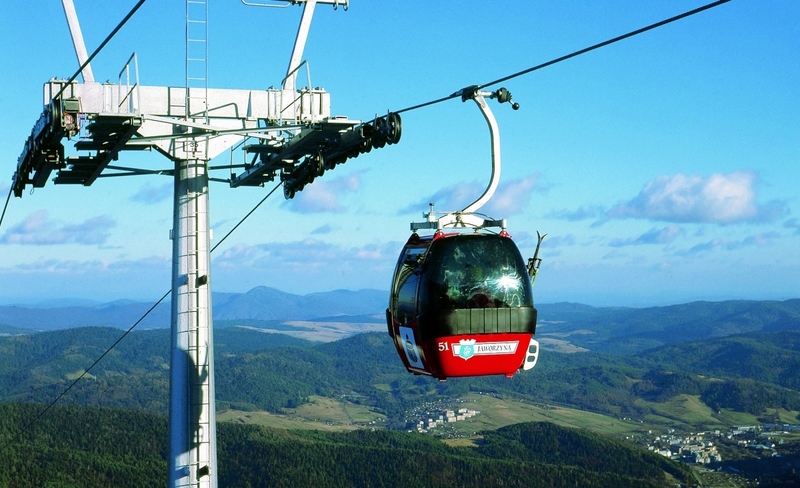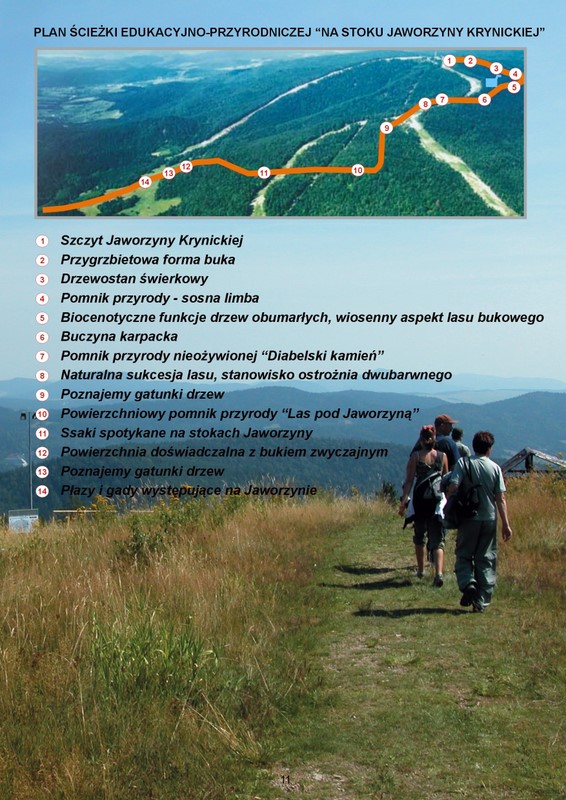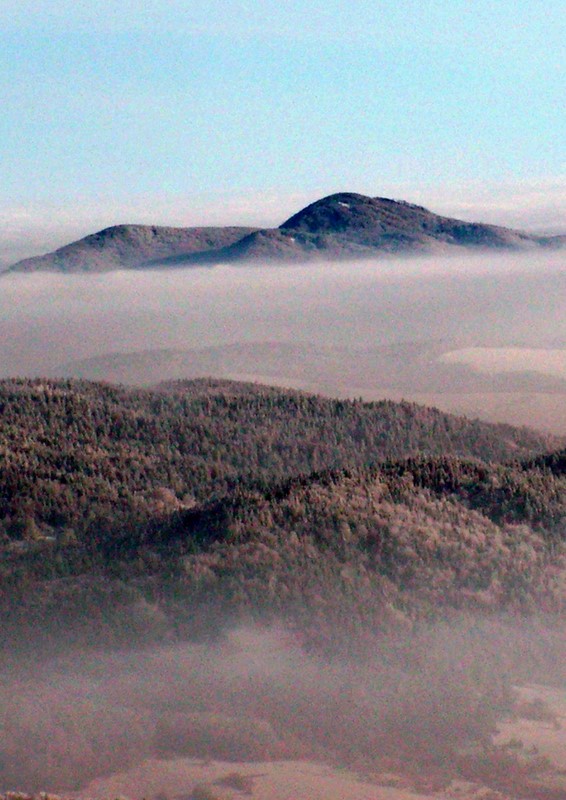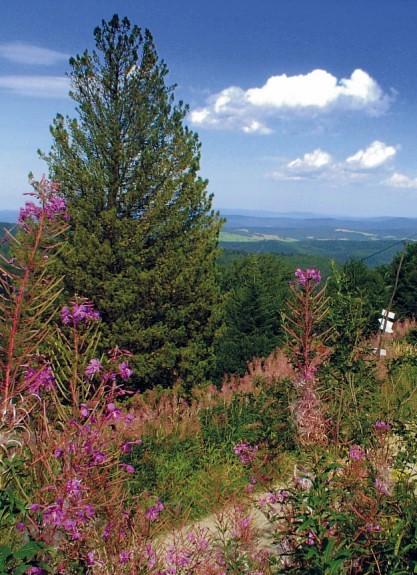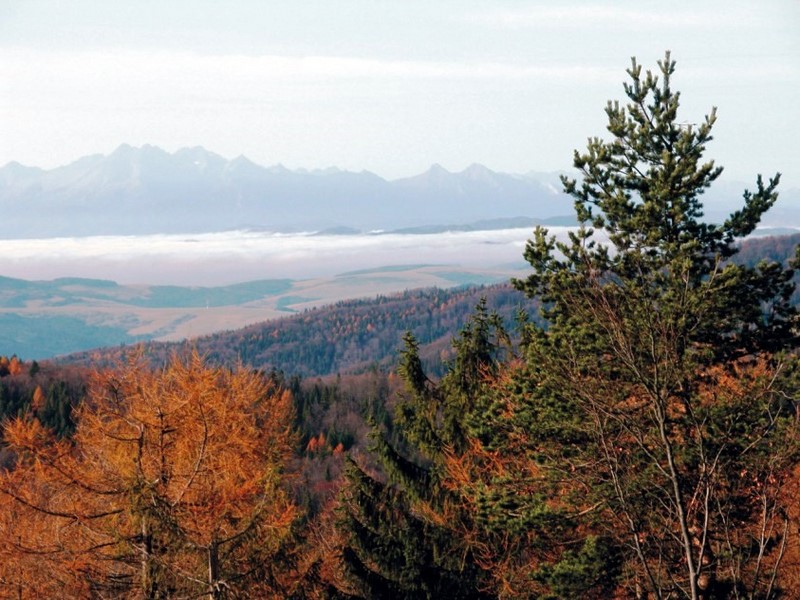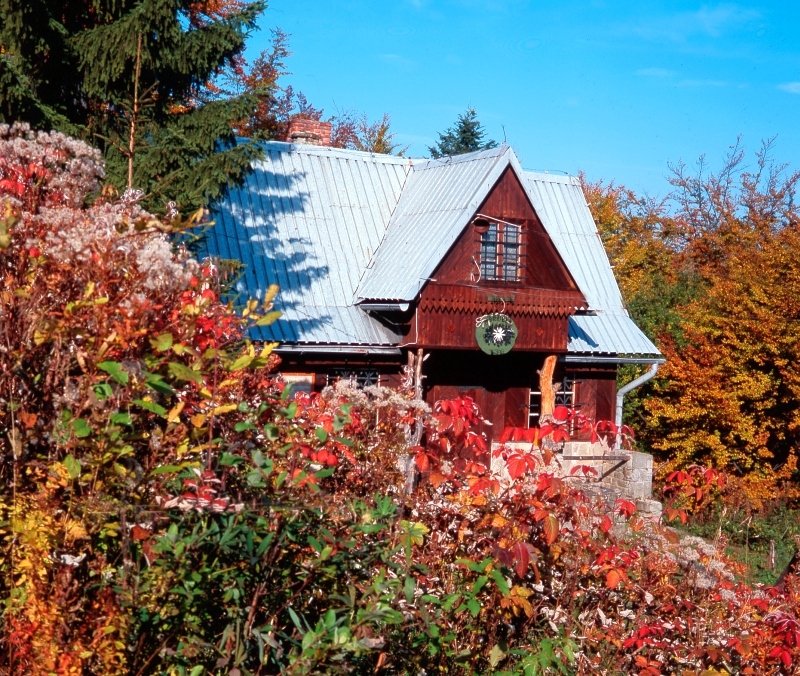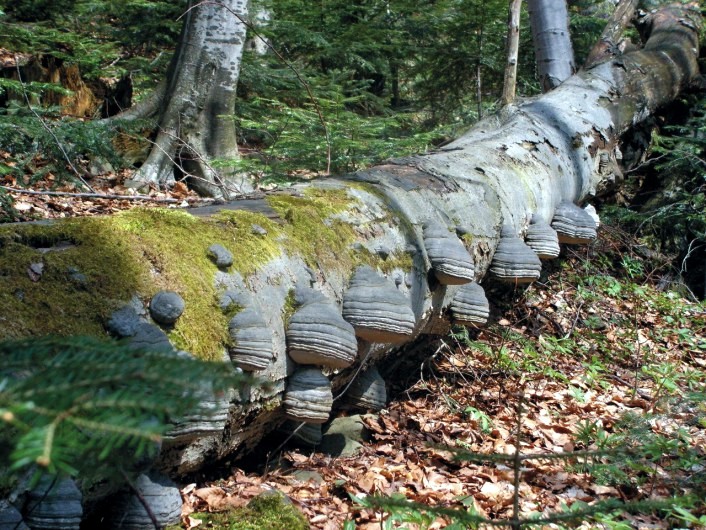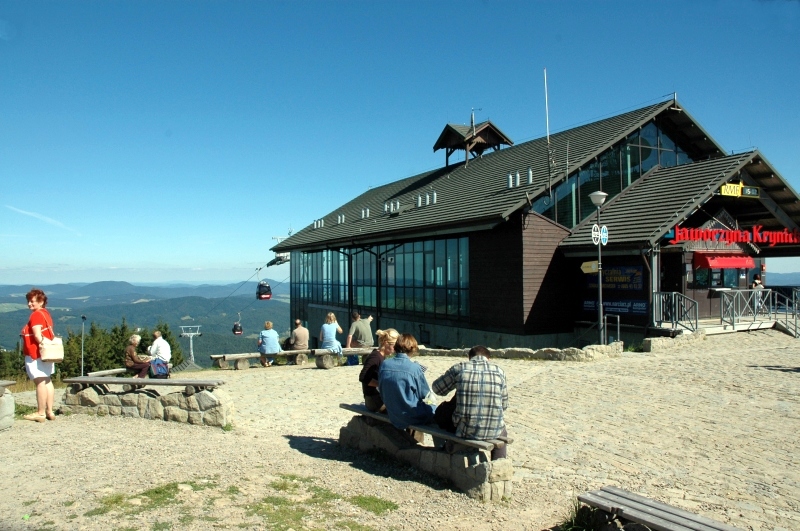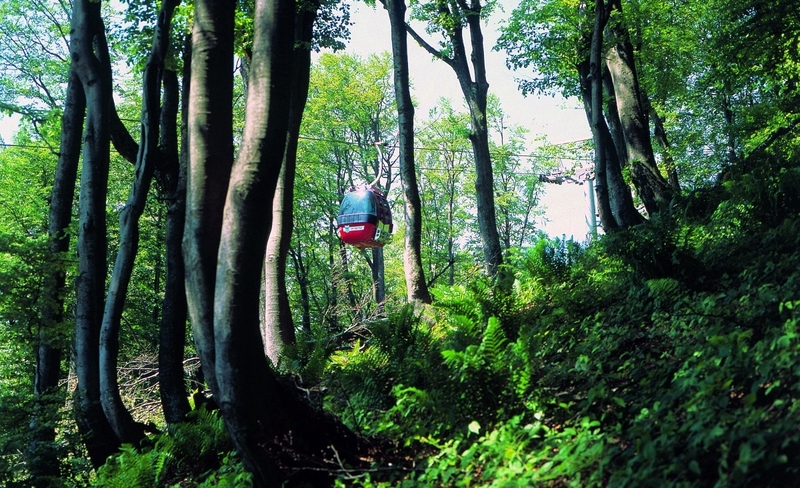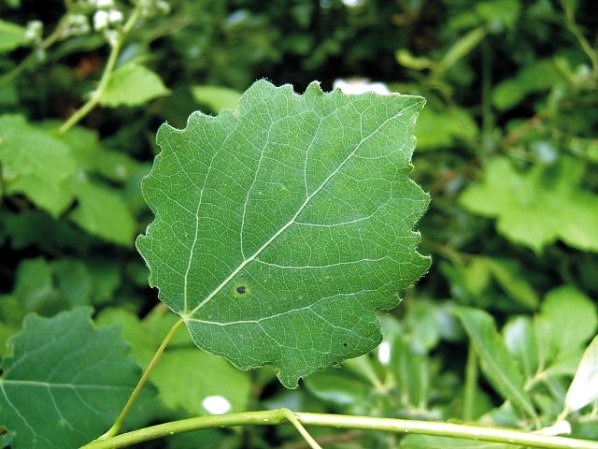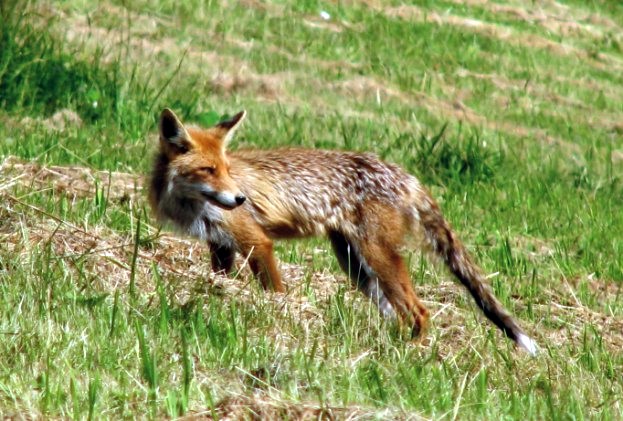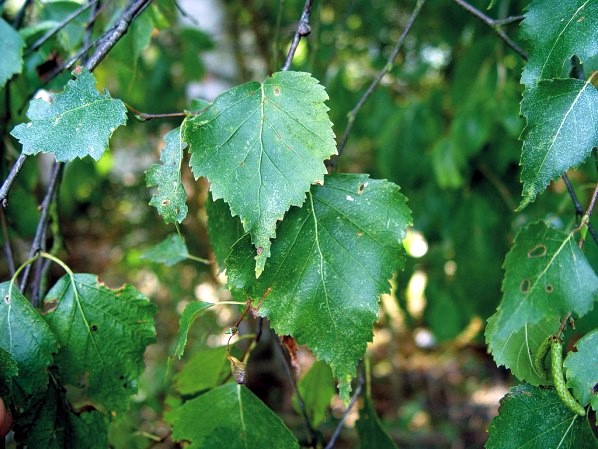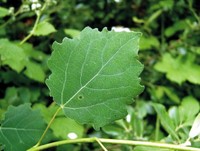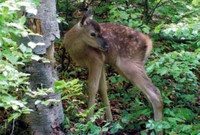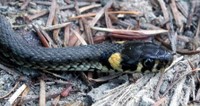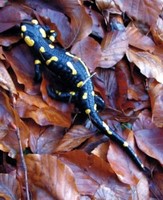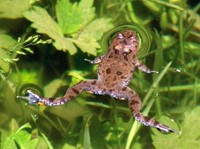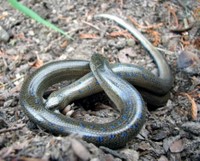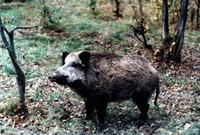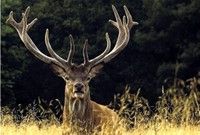To make a stay on the slopes of Jaworzyna Krynicka more attractive, workers of The Forest Experimental Institution in Krynica prepared a nature trail with boards that are located every several hundred meters and describe a given part of forest stand. Along the route arrows indicate direction. The route is 4,5 km/2,80 mi long and it takes about 2 hours to cover it.
Stop no 1 – THE TOP OF THE JAWORZYNA KRYNICKA
Stop no 2 – THE FORM OF BEECH BY THE MOUNTAIN RIDGE
Beech grow here at the height of about 1100m/3 608,92 ft above sea level. At this height there is a top limit of beech forest in the Carpathians. Because of poor habitat conditions (soil thickness of poor quality, strong winds, low temperatures in winter, early and late ground-frosts), by the mountain ridge beech have a crooked form. They are dwarf, gnarled and twisted trees with treetops stretching widely over the bases of trunks. They are resilient and ductile though. Forest stands of this kind are very important on an ecological basis: they protect soil and water ( steady and prevent the hillsides from sliding, they impede the process of washing out soils on the hillsides). Also aesthetic features of dwarf beech trees are of great importance, especially in autumn when their leaves blaze with colour.
Stop no 3 – THE SPRUCE STAND
There used to be pasture lands by the top of Jaworzyna, where Lemkos used to graze sheep. When these people were evicted, grasslands were afforested with larch and spruce trees. Unfortunately, the latter species is of foreign origin and was inappropriate to be introduced in such habitat. Nowadays, it causes serious breeding problems. Spruce forest demonstrates evident signs of weakness such as sparse treetops and discoloured spruce-needles. The weakened stand is being attacked by different insects, especially by European spruce bark beetle (Ips Typographus) and fungal pathogens such as: honey mushroom (Armillaria mellea) and bracket fungus. Therefore, such stand is not promising and needs an immediate human interference. In the thin areas beech seedlings are planted – beech has a strong root system and is resistant to damage caused by wind. Taking native deciduous species into account, beech is a species that most easily bears the conditions of growing in the shade.
Stop no 4 – NATURE MONUMENT - SWISS PINE
This species is very well adapted to high-mountain conditions. Even with the temperature of -60º C the plasma membrane of needles does not freeze. (Spruce is already affected with the temperature of -35º C). In Poland the Swiss pine grow only in the Tatra Mountains and are a strictly protected species. Highlanders used to make crates with the Swiss pine wooden planks (they served as wardrobes for keeping their Sunday bests in) because Swiss pine wood is the most fragrant among the native tree species and it is clothes moth repellent. The resin because of its intensive fragrance was added to the incenses. With the help of this tree, especially of its ashes and bark, wounds healed up very quickly and so Swiss pine was used in the quack cures. The tree in front of the mountain chalet was allegedly planted by marshal Piłsudski’s adjutant or by marshal himself.
Stop no 5 – THE BIOCENOTIC FUNCTIONS OF DEAD TREES
In Poland’s latitude it takes several or tens ( in the mountains even several hundred) of years for wood to decompose. An individual tree from the moment of its death to the complete decomposition becomes the habitat of several hundred fungus, plant and animal species. In the hollow trees such birds as woodpeckers, tits, flycatchers and owls build their nests. In the mouldering organic matter of trunks, grass-snakes and other reptiles lay their eggs, the spotted salamander spends there the major part of its adult life – as the mouldering processes increase the temperature. On the forest floor we can see wood in different stages of decomposition. After some time complete mineralization takes place and then the elements reach the soil and can be reused by moss, ferns and flower plants.
Stop no 6 – THE SPRING ASPECT OF BEECH FOREST
This aspect of the beech forest can be observed in spring, in the undergrowth. Before leaves appear on the trees, the amount of sunlight that reaches the forest floor is enough for the spring geophytes (anemones, toothworts, common fumitories) to grow. In these conditions these plants are able to develop the over-ground part, to bloom and to store nutrients which are necessary for the following year’s vegetation. When leaves appear on the branches, the over-ground parts of the plants of the forest floor die back to the ground level but the underground stored nutrients will ensure their survival till the following spring.
Stop no 7 – CARPATHIAN BEECH WOOD
Beechwood is a dominant plant form on Jaworzyna Krynicka. It is characteristic of the lower sub-alpine forest zone. This stand changes according to the height above sea level and the exposure to light. There are fir trees located lower and beech trees located higher. These species are accompanied by spruce, sycamore and sometimes mountain elm trees. The most popular plants of beech wood undergrowth are: glandular toothwort, coralroot (Cardamine bulbifera), heart leaf comfrey, hollowroot (Corydalis cava) and lungwort (Pulmonaria obscura). There are such ferns as: lady fern and male fern. However, to complete the list of herbaceous plants that grow here we would have to provide the names of about 150 species. Most of them develop in early spring in order to have time to bloom before the appearance of leaves on the beech branches. Because of the diversity and abundance of flora, beech woods are a perfect habitat for many animals. There are such protected species of animals as: rosalia longicorn, wildcat, wolf, lynx, bear, grass-snake, viper, lizard, salamander, bombina frog and others.
Stop no 8 – AN UNANIMATED NATURE MONUMENT - 'DIABOLIC STONE'
A sandstone – sedimentary rock that for centuries has achieved its original shape due to the different weather resistance. One of the most beautiful legends of Krynica is connected with this rock that has a form of 5m high mushroom.
Stop no 9 – THE NATURAL SUCCESSION OF THE FOREST
The place of the stand damaged by strong winds starts to be overgrown with so called pioneer species which are: birch, pine, goat willow and larch trees. Due to the few requirements regarding soil fertility and due to the light seeds these trees quickly replace the damaged ones and they give shade to the soil. This leads to the creation of conditions suitable for the other forest species, especially fir and beech to grow. Fir and beech trees will have topped their hitherto ‘guards’ in tens of years, changing this currently open ground into a beautiful Carpathian beech wood.
Stop no 10 – THE POST OF A MELANCHOLY THISTLE
It is a post of a rare plant, which was described by prof. Pawłowski in the thirties of the XXc. Thistle looks especially richly when it is in bloom, when its flowers attract many insects, among them very interesting species of Sphinx butterflies called Colibri butterflies because like those birds they feast on the blooms hanging in the air and sipping the nectar with a long proboscis.
Stop no 11 – WE LEARN ABOUT TREE SPECIES
On the boards the features of tree species of Jaworzyna Krynicka are described. These are: type of treetop, trunk, leaf structure, inflorescence and seeds. Near the boards there are examples of fir, European larch, common pine, sycamore and common beech trees with identification tags attached.
Stop no 12 – AN AREAL NATURE MONUMENT 'FOREST BY JAWORZYNA'
There is a protected beech forest with many trees on the ground which create habitat for the moss and fungi. This forest grows on the sandstone landslide. The beech are over 150 years old, fir trees are a little younger. There is also sycamore with characteristic leaves and peeling bark. The common polypody and maidenhair spleenwort ferns grow on the rocks. In the undergrowth there is an interesting plant with light blue flowers and heart like leaves - perennial honesty. Its seeds are of silver colour and are called ‘Judas silvers’ in the folk slang, whereas the shrivelled stems with seeds are used for the floral decorations.
Stop no 13 – MAMMALS OF JAWORZYNA
This stop presents major primeval forest species such as deer, roe-deer and boar, moreover European predacious mammals such as bear, wolf, wild cat and lynx. There are charts of their tracks provided. This way we can easily recognise what was the animal that left its mark on the path we are following.
Stop no 14 – THE EXPERIMENTAL AREA WITH THE COMMON BEECH
The Experimental Institution of The Agricultural Academy in Cracow owns about 630 ha of experimental and research area. It carries one of its experiments in the Research and Didactic Station of the native common beech forest. Currently in the forest spruce monocultures are dying. To preserve this forest it is necessary to plant there species that used to grow there. In the region of the Carpathians the natural forest species are beech and fir trees. In order to find the best varieties of the beech, in 1992 seeds from 47 Polish seed stands were collected and planted in the 6 research areas in different regions of Poland. After thorough analyses, the best varieties of the beech will be selected and introduced on the woodlands to create beautiful beechwoods.
Stop no 15 – AMPHIBIANS AND REPTILES OF JAWORZYNA
The board presents and describes the major species, i.e. common European viper, grass-snake, blindworm, spotted salamander and bombina frog.
Stop no 16 – WE LEARN ABOUT TREE SPECIES
Here we can learn how to recognise silver birch and common aspen – the pioneer trees under which other tree species grow.



